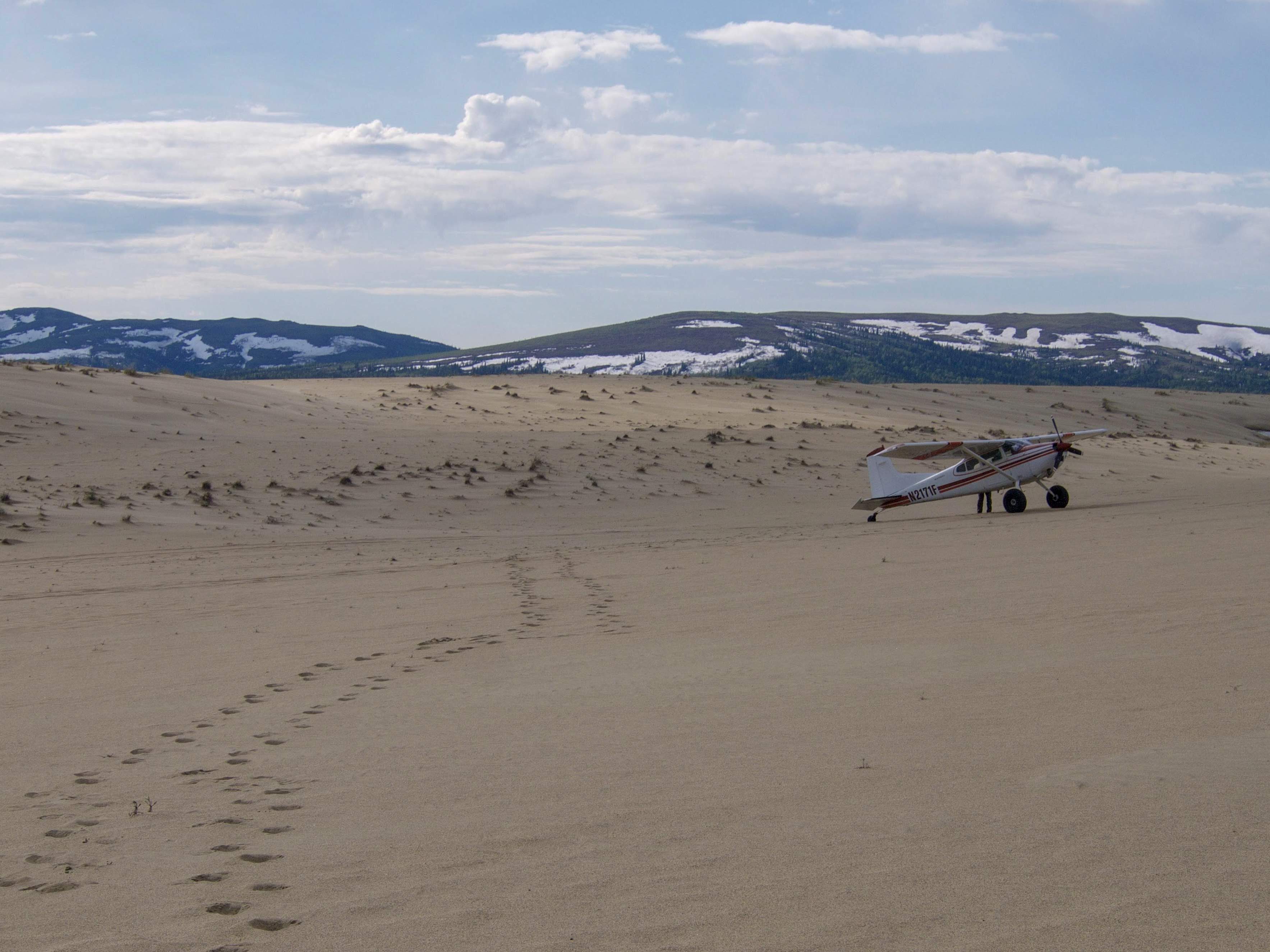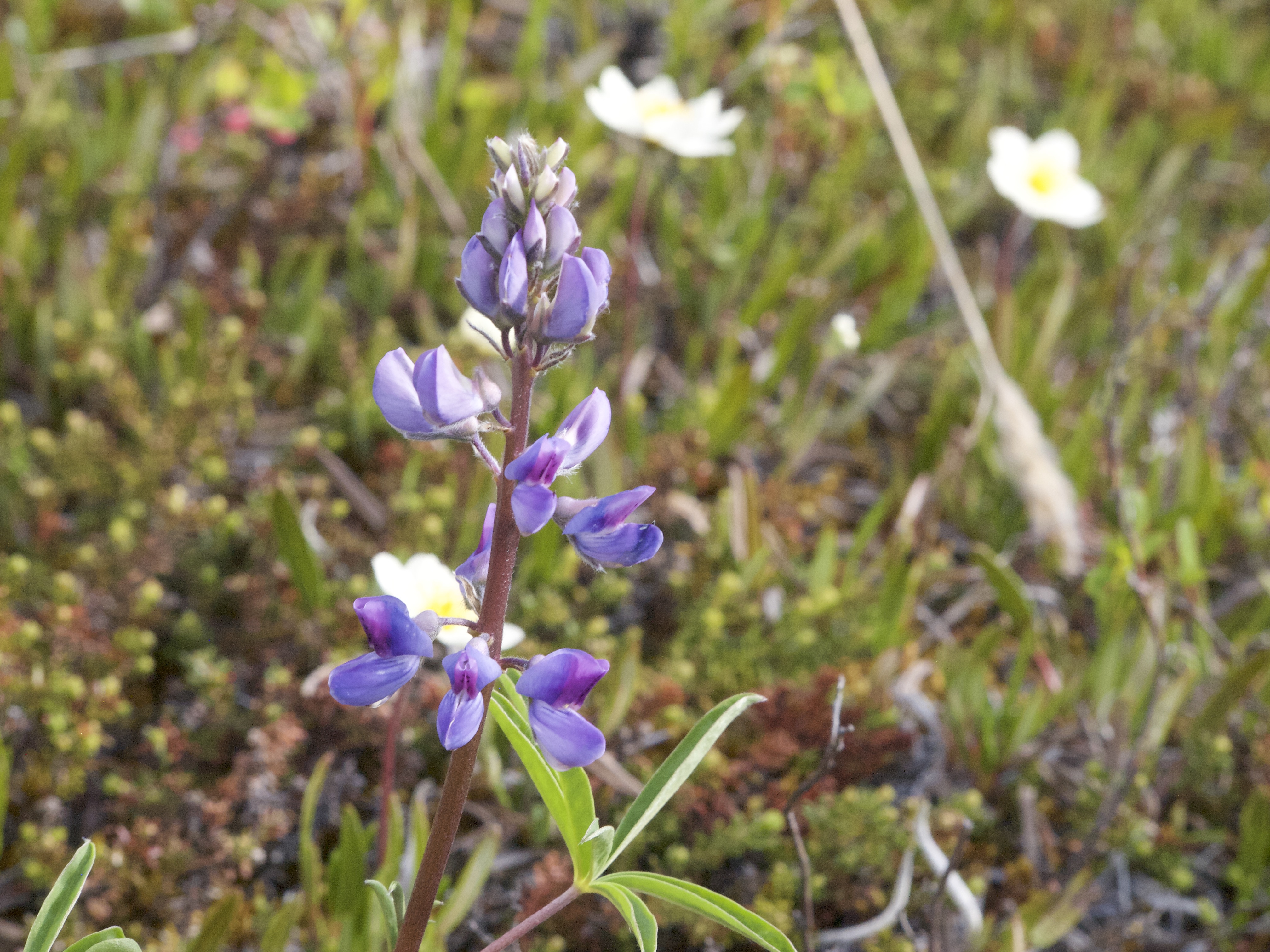In the early morning of my first flight in a bush plane, I drew back the dark curtains to be greeted with a bright blue sky and a calm ocean in the distance. The perfect morning for flying in a bush plane! Trips in small aircraft are extremely weather dependent; even if the weather is clear, windy conditions make for a very uncomfortable ride. The NPS pilots prefer flying in the morning because convective air currents generally increase in the afternoons, creating more turbulence.

An NPS plane sits on the Great Kobuk Sand Dunes.
At 7:00 AM, I met the other NPS staff at the hangar, including NPS pilot Rick Dolan and Education Specialist Nicole Shepherd. We slipped on the Nomex flight suits over our clothes, which were all entirely made of natural fibers such as wool, cotton, or leather. We also put on personal flotation device (PFD) vests stocked with emergency kits. Once dressed in the proper gear, our pilot oriented us to the plane and ensured we knew how to use the seatbelts, open the doors and windows, and shut off the fuel and engines. He also pointed out the personal locating beacon (PLB), and emergency tent and sleeping bags. After preparing for the flight, we climbed in to depart. I felt the plane start to shake, the engine loudly roar, and then we sped up and lifted off the ground. My stomach flipped a little as the buildings in Kotzebue began to shrink in size.

NPS staff pose next to the plane.
Every year seasonal employees, like me, join the NPS team to work in Western Arctic National Parklands. The remote nature of these parks make visiting them a challenge, even for employees & local residents. These parks are Cape Krusenstern National Monument, Noatak National Preserve, and Kobuk Valley National Park. In order to better understand the parklands, this park unit makes an effort to send employees out for short trips and projects in the backcountry.
The opportunity to fly over and see the parklands with my own eyes will help me to be a better resource for park visitors. On this trip, we flew over wild rivers, mountain ranges, and the sand dunes of Kobuk Valley National Park. We also landed at the dunes to experience them as visitors might. After I floundered out of the plane and onto the sand, I slowly scanned the landscape. I saw massive mounds of sand with intermittent clusters of short plants growing, a shallow river, and a forest of spruce on the other side of the valley we landed in. There was a light breeze, but the sand and the June sun felt warm and comfortable. We walked toward the trees, crossing the shallow river, and found a trail created by wildlife through the thicket.

The Great Kobuk Sand Dunes are a scenic feature of Kobuk Valley National Park.
As we moved along this trail, we noticed lots of scat left by different wildlife. One pile was definitely bear scat, full of caribou fur. Could it have been left by a bear following the recent caribou migration? We also observed wildflowers of many kinds growing amongst the lichen and other tundra plants close to the ground. Early in summer, everything is just beginning to bloom, grow, and thrive—including the mosquitoes. Several surrounded us, but I imagine their numbers will dramatically increase before the summer is through.

Arctic Lupine flowers bloom in Kobuk Valley National Park during the summer.
It was incredible to visit the sand dunes of Kobuk Valley, but I also enjoyed viewing the colorful and unique landscape from the sky. The Kobuk, Squirrel, and Salmon rivers, the Baird mountains, and the villages and remote camps were fascinating. With this trip, I gained first-hand experience that the Arctic wilderness in northwestern Alaska is magical.
Written by Lauren Utykanski
